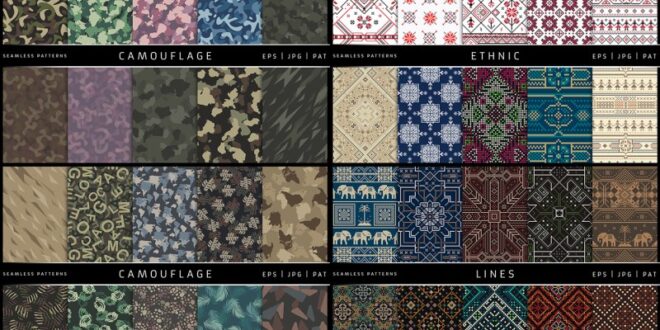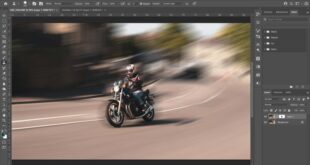How To Create Seamless Patterns In Photoshop For Textile Design – All Classes Collectable Art Production Packs Create a Powerful Licensed Art Portfolio Creative Workflow Plan Login
2025 Trend Report Stamp Brush Vintage Charms – Template 5-Set Teardrop Sheet Mini Collection Product Collection Cards Deck Collection Guide Creative Business Asset Pack
How To Create Seamless Patterns In Photoshop For Textile Design
A seamless pattern (or repeat pattern) is a pattern that can be repeated without any visible seams or breaks. In this tutorial, you’ll learn how to turn your artwork into professional seamless surface designs and patterns that easily assemble into pattern blocks. This means that your design can expand
Nedgraphics Design For Adobe Photoshop: A Textile Designer’s New Best Friend
The hardest part of creating a seamless pattern is getting the pattern block right so it repeats seamlessly. But don’t worry! That’s exactly what I’m going to walk you through in this guide. On the left is an example of a fixed pattern, and on the right is an example of identical elements arranged in a cube, allowing them to be repeated seamlessly.
If you have the latest version of Photoshop on your computer, there is a new tool called “Pattern Preview” that makes the whole process of creating a pattern very simple. I recommend reading this post to learn the basics of swatches in Photoshop, and then jump over to this new post to learn how to use the swatch preview tool!
And if you’re a visual learner, the concept of continuous learning patterns in video form can be a little easier. I teach this same concept in my class – Seamless Patterns by Hand in Photoshop. You’ll learn my entire process from creating the details by hand to digitizing them and arranging them seamlessly! This class is everything I wish I knew about pattern making when I first started my face design career, so I’m excited to share it with you.
And the best part? New Skillshare users can get a free month to test the platform and lessons! Skillshare is an amazing creative hub with thousands of classes to choose from. I’m constantly releasing new tutorials so there’s always something new to learn!
Repeating Pattern Tutorial
To get started, you need a few elements that can be placed in a pattern. In my example, I’ll use some citrus watercolor elements that I painted, scanned, and digitized. If you plan to work with painted elements, it is important to clean the white paper background first. If you want to learn how to do this, check out this tutorial before you start making your seamless pattern. This tutorial will walk you through the step-by-step process to remove the background from your image in Photoshop.
Ready to create your own seamless pattern? Open a new file in Photoshop and get started! Step 1: Create a square pattern block
First, import the elements you’ll use for the template into a Photoshop file. Next, we start by laying out the square pattern block. This is what allows us to collect the pattern and repeat it endlessly.
To create a square block, select the Marquee Tool (shortcut: M). Then draw a square in the middle of your page while holding down the shift key to make a perfect square. The size of the square doesn’t matter as long as it is large enough to accommodate your painted pieces.
Affinity Designer Is The Best Software For Creating Repeat Patterns
In my example, I fill the background of the pattern block with a dark color so that the painted elements really stand out and I can see what I’m doing.
Start by creating a new layer. Click on the bottom right corner of the layers panel where it says “Create a new layer”.
To add a background color to your area, select a dark or contrasting color and grab the Paint Bucket Tool (shortcut: G). Click on your field to paint it. Now deselect the square using the keyboard shortcut cmd + D.
If your square hides your elements like mine does here, click and drag the background layer below your element layer to make them appear on top.
Seamless Patterns Designs: Explore World Of Print Designs
Make sure each of your elements is on its own layer so you can move them individually. If you haven’t done it yet, you can do it by selecting the Lasso tool (shortcut: L). I like to use Polygon Lasso for this. Select each element with your lasso, cut it with the keyboard shortcut cmd + itself! When you’re done, group all the layers of the element by clicking on the first layer, holding shift, clicking on the last layer, and then using the keyboard shortcut cmd + G.
In my example, I listed each individual layer and grouped them into a folder called “Snapshot”. It helps me stay organized when I work.
Now we start arranging these elements in our field. The key to creating a seamless pattern is continuity of elements in your pattern block. Essentially, you’re creating a puzzle piece with your pattern block, and you want all of its elements to flow seamlessly as you repeat it. To make this piece, you’ll want to have hanging pieces on the left and top corners. Then you cut those pieces and move them to the opposite end of the block. This ensures that when you copy the pattern, the two parts of that element fit together like a puzzle, creating a seamless look.
If you’re feeling lost, I’ve got you covered! Here is a visual example. On the left is the first step in creating a pattern block. I have parts of the elements hanging on the left side and above. The pieces that hang on the edge are cut and transferred to the opposite edge, where I circled these gaps. On the right is a sample block of what it will look like when finished. The pieces that were hanging off the edge were cut and moved, and the places I gathered are now filled with those pieces.
How To Make A Pre Existing Image Into A Seamless R…
Now that you know where we’re going, you can place your elements in your block shape! Be sure to include some hanging details in the left and top corners and note how they are assembled. Don’t forget that whatever falls off the edge will be repeated on the opposite end. Be sure to leave spaces where you repeat element progressions.
You can move your elements using the Move tool (shortcut: V). I also want to highlight and resize the elements to give this template more visual interest. You can do this using the Transform tool (shortcut cmd + T). You can also copy your elements by selecting the element and using the cmd + J keyboard shortcut.
We want to start by checking the block to make sure all the elements are aligned after cutting and moving the output elements.
Start by making a copy of your compiled elements. This allows us to test the template and edit the original components if necessary. Duplicate the layer group by selecting it and using the keyboard shortcut cmd + J. Then right-click the new group and select Merge Group.
How To Create Seamless Repeat Patterns In Photoshop
This will flatten the copy of the group so that it is all on the same layer. It’s important to make sure you’re only merging copies, because you’ll want to merge all the parent items back together after checking it out.
It’s time to cut the hanging elements on the left and top corners and move them to the opposite edge of your block.
Start by hiding the original layer group of the composition by clicking the eyeball to the left of the group in your Layers panel.
Then, making sure you’re on a flat copy layer, grab the Marquee Tool (shortcut: M). Select all elements to the left of your field.
Create Realistic Fabric Texture For Your Patterns In Photoshop — Mel Armstrong
Use the move tool (shortcut: V) and press the shift key to lock the elements. Drag the highlighted elements to the right side of the field. Make sure you place them in the corners, because if things are wrong, even by a pixel or two, it can spoil the seamless look of the pattern.
In this example, everything is very well placed on the left and right. Now, using the same procedure, bring the top elements to the bottom of the square.
You can see in the example below that I didn’t get the top of the orange right. It contains one leaf and is slightly close
 Alveo Creative Blog Guiding users through techniques for enhancing images, retouching portraits, and mastering popular editing software
Alveo Creative Blog Guiding users through techniques for enhancing images, retouching portraits, and mastering popular editing software




